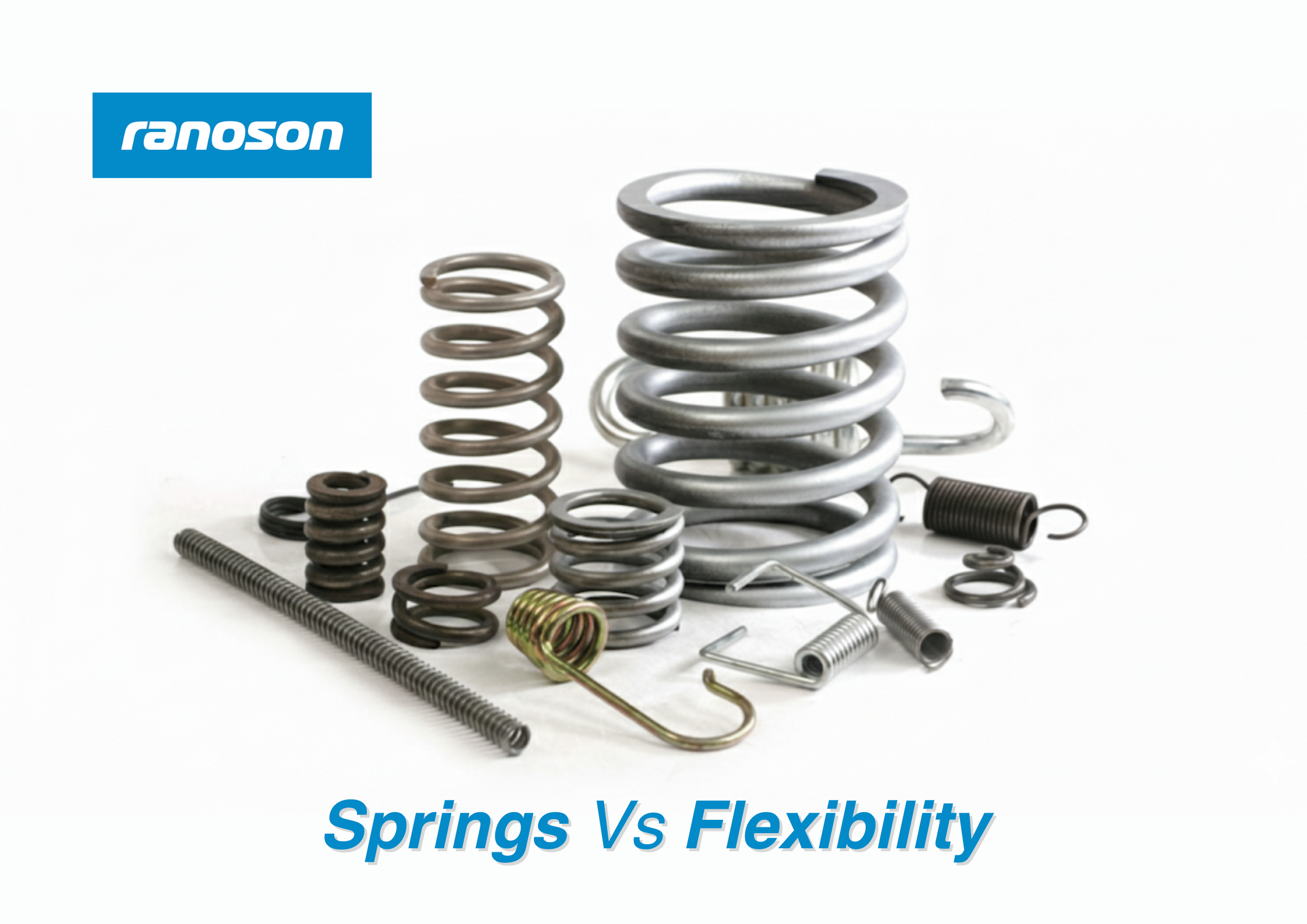
The Impact of Wire Diameter on Spring Strength and Flexibility
Posted on: 03 Oct, 2025
When it comes to spring performance, one factor carries more weight than most: the diameter of the wire. A small change in thickness can make the difference between a spring that delivers consistent force and one that wears out too quickly. For OEMs and sourcing managers, understanding how wire diameter influences strength, flexibility, and longevity is essential for making the right design and procurement decisions.
Let’s break down why wire size matters, how it affects performance, and what you should keep in mind when choosing the right spring for your application.
Why Wire Diameter Matters
Springs are simple in appearance but complex in behavior. Their ability to absorb energy, return to shape, and withstand repeated use depends heavily on geometry. Among all the design parameters, wire diameter plays one of the most significant roles. A thicker wire creates a stiffer, stronger spring. A thinner wire allows for greater flexibility and responsiveness.
This balance of strength and flexibility is not about preference but about matching the spring’s characteristics to the exact demands of the application. Choose the wrong diameter and you risk failures, inefficiency, or higher maintenance costs.
The Relationship Between Diameter and Strength
Here’s the thing: the strength of a spring is not proportional to the wire diameter alone, it increases exponentially. In fact, the force a spring can exert is directly related to the fourth power of its wire diameter. That means doubling the diameter of the wire makes the spring 16 times stronger. This is why even small changes in thickness have a massive impact on performance.
Thicker wire springs are ideal where heavy loads, high stress, or durability under extreme conditions are required. Examples include automotive suspension systems, agricultural equipment, and industrial machinery. On the other hand, thinner wire springs are better suited for delicate applications such as electronics, medical devices, and consumer appliances where sensitivity and precision matter more than raw strength.
Flexibility and Function
Flexibility is just as important as strength. A spring made from thinner wire can compress or extend more easily, allowing for smoother motion and better responsiveness. This makes them perfect for applications where controlled movement is critical, such as in switches, locks, and small mechanical assemblies.
But flexibility comes at a cost. Springs with thinner wire are more prone to fatigue and may not withstand repeated heavy cycles. That’s why design engineers must always weigh the balance between flexibility and strength based on actual working conditions.
Material Choice and Diameter
Wire diameter does not work in isolation. Material selection plays a big role in how effective a spring will be. Stainless steel, carbon steel, phosphor bronze, and specialty alloys all bring different properties to the table. For example, stainless steel offers corrosion resistance, while high-carbon steel provides superior strength. When paired with the right diameter, these materials help tailor springs for highly specific requirements.
For example, a small-diameter wire in stainless steel may still perform effectively in corrosive environments where a thicker carbon steel spring would fail over time. This is why collaboration between design engineers and spring manufacturers is essential for achieving the right combination.
Applications Where Wire Diameter Makes the Difference
Let’s look at some real-world scenarios where wire thickness defines the outcome:
- Automotive suspension: Thick wire ensures durability and the ability to handle constant load-bearing stress.
- Consumer electronics: Thin wire allows compact springs to deliver precise movements in buttons, connectors, and switches.
- Agricultural machinery: Heavy-duty thick wire springs withstand vibration, shock, and exposure to dirt and moisture.
- Medical devices: Fine wire springs deliver accuracy and responsiveness without adding bulk.
- Industrial tools: Medium to thick wire balances flexibility with the strength needed for high-performance machinery.
Design Considerations for OEMs and Sourcing Managers
When deciding on wire diameter for your springs, here are some key questions to ask:
- What kind of loads will the spring face daily?
- How many cycles of compression, extension, or torsion should the spring withstand?
- Is flexibility or durability the higher priority?
- What environmental factors (temperature, moisture, corrosion) will affect the spring?
- How much space is available in the product for the spring design?
These considerations guide the balance between wire size and performance. By addressing them early in the design stage, sourcing managers can prevent costly redesigns or part failures down the line.
Precision in Manufacturing
Wire diameter is only as effective as the precision with which it is manufactured. Even small inconsistencies in thickness can lead to springs that behave unpredictably. High-precision CNC and multi-axis manufacturing ensures wire is formed consistently, coil after coil, with the right dimensions and tolerances.
At Ranoson, we focus on delivering this level of accuracy. Our in-house capabilities allow us to control every stage of production, ensuring springs are built to specification and tested for long-term reliability. For OEMs and Tier 1 suppliers, this means peace of mind that every spring will perform exactly as intended.
Wire diameter might seem like a small detail, but in spring design it has a big impact. It defines how much load a spring can bear, how flexible it will be, and how long it will last under repeated cycles. For sourcing managers, understanding this relationship is key to choosing the right components and avoiding unnecessary failures.
At Ranoson, we help OEMs and suppliers match spring design to real-world application needs, ensuring every part delivers consistent performance and reliability where it matters most.
📧 sales@ranoson.co.in
📞 +91 7895010088 | +91 7217013190
